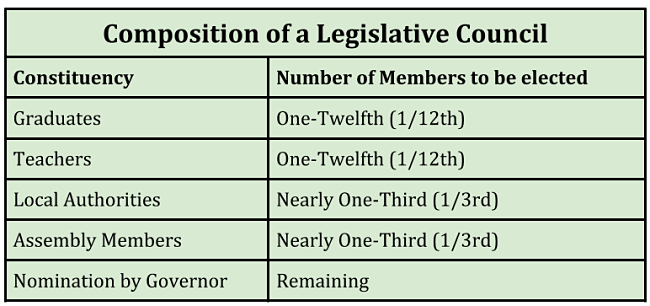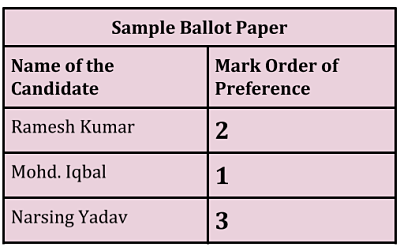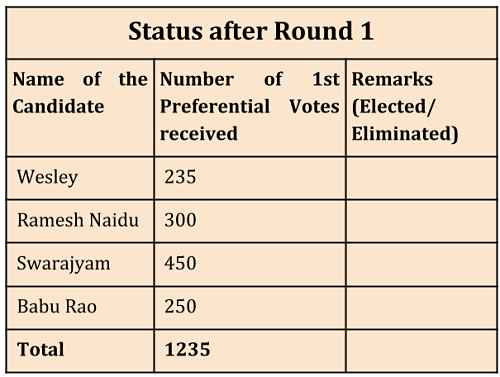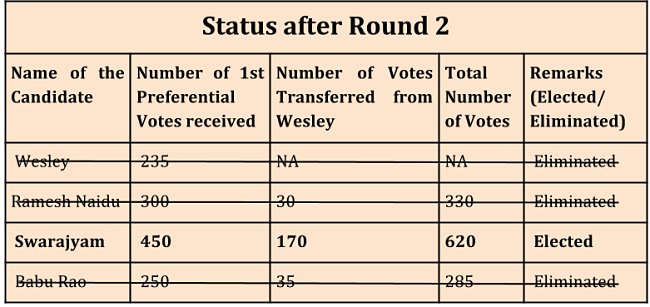[orc]Legislative Councils in states are very different from the Legislative Assemblies. The Councils are meant to play the role of the Rajya Sabha in the states and hence the composition, process of election is quite different from that of the state assembly. The councils consist of members elected through five different constituencies through a process of single transferable vote (STV) system.
The Legislative Councils in states are like the Rajya Sabha, a house of members who are not directly elected by people. The Legislative Council is a permanent house with almost 1/3rd of the members retiring every two years. Not every state has a council. Article 169 of the constitution authorizes the parliament to create or abolish councils in states. Currently, there are about seven states with functional councils.
The Legislative Council (Vidhan Parishad)
Article 171 of the constitution of India defines the composition of the councils. The strength of any council shall not exceed 1/3rd of the strength of the state assembly. But for smaller states, the minimum strength of the council can be forty (40). The members of the Legislative Councils comprise of people elected through five different constituencies.
- One third (1/3rd) of the members are elected by representatives of the Local Authorities (like Municipalities, Zilla Parishads, Block Parishads etc)
- One third (1/3rd) of the members are elected by members of the Legislative Assembly (the same person can’t be a member of both the houses)
- One-twelfth (1/12th) of the members are elected by the Graduates in the state
- One-twelfth (1/12th) of the members are elected by the Teachers in the state
- The remaining members are nominated by the Governor. Those nominated by the Governor should have special knowledge or practical experience in Literature, science, art, co-operative movement and social service.
The Election Process
The Election process for the council follows a system of proportional representation by means of the single transferable vote (STV) as mentioned in Article 171 of the constitution. This system is different from that of the normal election process to the Lok Sabha and the State Assemblies.
In STV, each voter ranks the list of candidates in order of preference. In the ballot paper, they place a ‘1’ beside their most preferred candidate, a ‘2’ beside their second most preferred, and so on. The completed ballot paper therefore contains the candidates in the order of preference as marked by the voter.
In an STV election, a candidate requires a minimum number of first preference votes (or quota) to be elected. The quota for a single seat to be filled is determined as follows
- Add the value of all the valid votes (one for every vote)
- Divide this total by two (2), since only one seat has to be filled
- Add one (1) to the quotient above ignoring the remainder. The resulting number is the quota of first preference votes required to be elected.
If none of the candidates get the required quota of first preference votes, then a process of vote transfer takes place, successively eliminating those who get the least number of first preferential votes. The process is explained in detail below.
The Process of Counting
Once the voting is over, the counting happens in various rounds after determining the quota required for the winner. Let us take an example.
For instance, in an election to fill one vacancy, there are four candidates in the fray and the total number of valid votes is 1235. According to the STV formula, the quota of first preference votes required for victory is 618 as per the formula.
In the first round, any candidate securing a minimum of 618 first preferential votes gets elected. In this example, none of the four candidates secures the quota. Hence there is no winner after the first round and the process of vote transfer takes place. At the same time, the candidate with the least number of first preference votes is eliminated.
Since Wesley is the candidate with the least first preference votes, he is eliminated. When he is eliminated, his votes are transferred to the other three candidates. The transfer takes place in proportion of the 2nd preference votes received by the other three candidates in those ballots with a first preference vote to Wesley. In this example, out of the 235 ballots with a first preference votes to Wesley, 170 of them had Swarajyam as 2nd preference, 35 of them had Babu Rao as the 2nd preference and the remaining 30 had Ramesh Naidu as the 2nd Preference. Hence the transfer takes place in that proportion.
After round two (after transfer of votes), Swarajyam has 620 votes, which is two more than the required quota. Hence she is declared elected and the remaining three are eliminated. This process of transfer continues until a clear winner is found. Sometimes, the process can run into multiple rounds to find the winner.
What about Multiple Vacancies?
Similar process is followed for multiple vacancies also. The STV formula for multiple vacancies will be the same with the only change being the number of vacancies to fill. Even there, the quota of first preferential votes is obtained and the candidates who reach the quota first will get elected. If clear winners are not found, then the transfer of votes takes place till winners are found. The process can get quite complex sometimes depending on the number of contestants.
Featured Image:By Adam Raoof from London, UK (P4020422) [CC BY 2.0 or CC BY-SA 2.0], via Wikimedia Commons








7 Comments
Yeah the process is bit complex. The example made it clear.
Nice article; however, i was looking for inputs on eligibility to contest for the MLC post. Please clarify if you can.. Thanks
nice article containing valueable information
Yes this article clear my confusion
good article and useful
What if in any of multiple rounds of counting, two candidates get the same no. of votes?
The process continues till all the votes are exhausted. If at all two candidates get the same number after that, a toss is conducted to select one